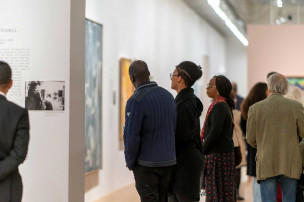Cultures in contact
Conférence de Dirk Hoerder, professeur d’histoire émérite, Arizona Sate University, animée par Nancy Green, directrice d’études à l’EHESS

L’UniverCité accueille pour une séance exceptionnelle, et en anglais, Dirk Hoerder autour de son ouvrage Cultures in contact. L’occasion de dessiner une carte des mobilités humaines dans la très longue durée, de mettre à jour les transformations à l’œuvre dans les pays de départ et d’arrivée, et de réfléchir à l’articulation entre trajectoires individuelles et histoire collective.
Mass and individual migrations over time
Migrations have shaped human history. People in the past were highly mobile as – first topic – macro-regional migrations and connections around 700-1300 CE show, whether in China, Africa, or the Americas. Everyday mobility was equally high as cases from Europe show; long-distance connectivity involved the whole of France.
Agency and power in migration processes
Why, we ask next, did people decide to migrate? Or: why were they migrated, why were forced migrations imposed on men and women? Some left dire circumstances or “known impossibilities”, for known or expected possibilities. Others, with no intention to move, were captured and shipped off, across the Atlantic for example. Again others were forced to become refugees by religious intolerance, war-mongering, or other violence. How did they reestablish lives?
19th-/ 1st half 20th-century migration systems across the globe
Migrant agency, as well as the constraints imposed by forced migration, has been intensively discussed for transatlantic moves, the White and the Black Atlantic. Were there other migration “systems”? We will briefly discuss the Indian Ocean/ Southeast Asian one, the Russo-Siberian one, and North-China Manchuria one – all ending by the 1930s. From the 1880s to the 1940s, Europe became the world’s major refugee-generating region.
Individual agency in “systems”
Men and women, who moved in these major “systems,” had to make decisions about their short-term plans and life-course projects. We will highlight constraints and options by following the trajectories of an Italian woman, 1880s, and a Chinese man, 1913-1940s, in North America. Experiences of indentured servants in the plantation labor regime provided few options and might resemble slavery. Chinese migrants in Southeast Asia resembled European migrants in North America as regards options but patterns of family formation were different.
Changes from the 1950s to the 2000s
Global restructuring between superpowers, through decolonization, through demand for oil from the Persian Gulf states, and trough development of so-called tiger states changed patterns of migration. Individual migrants have to cope with complex admission systems within countries and internationally. The life-courses they develop depend on states’ receptivity as much as on their human and social capital.
Repères bibliographiques autour de la conférence, proposés par la Médiathèque Abdelmalek Sayad





